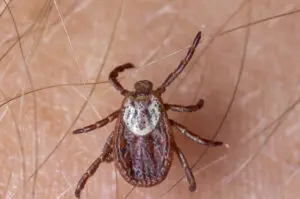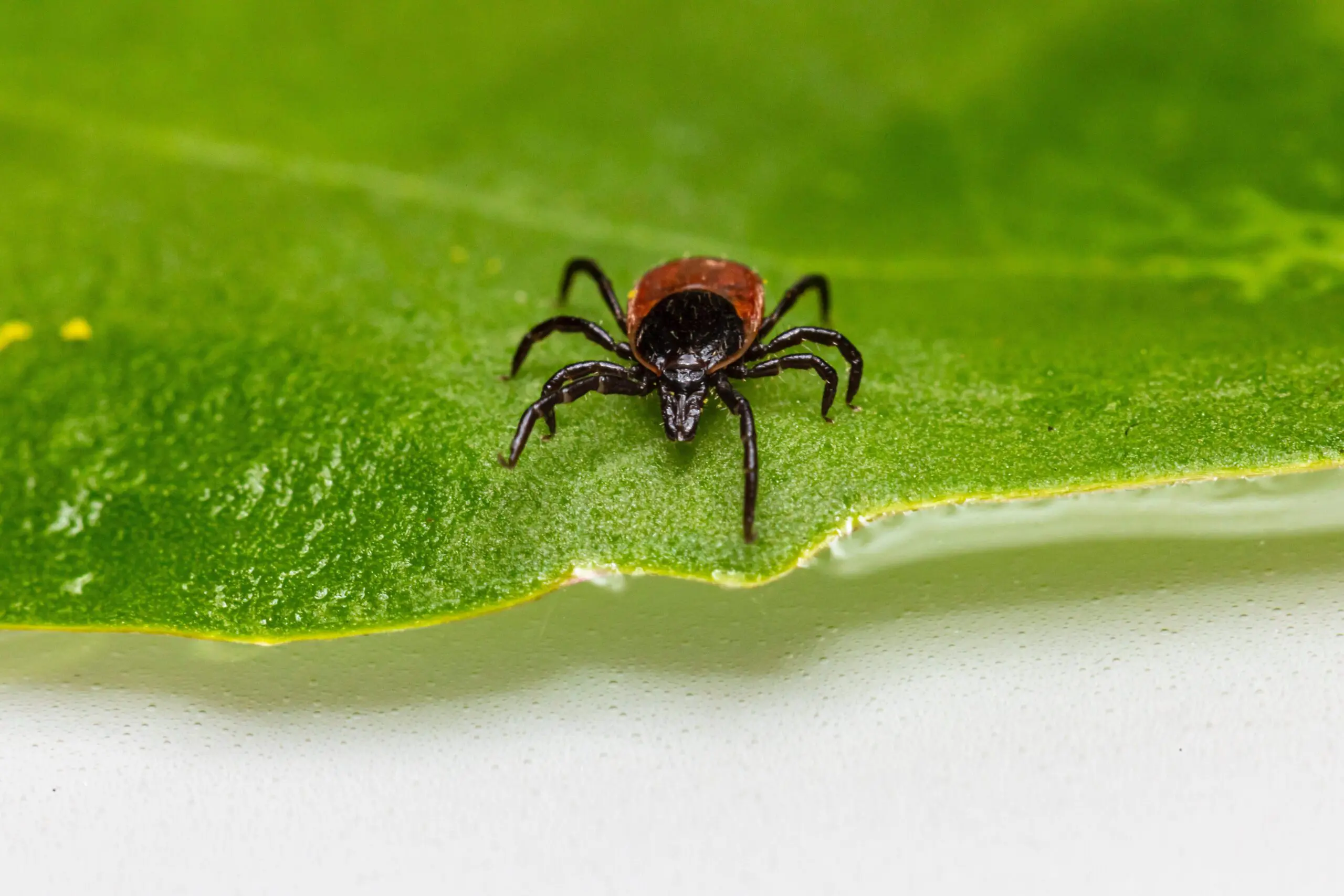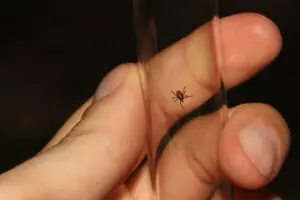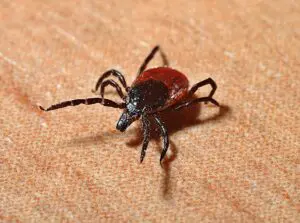

It’s finally here! The precious warm weather- perfect for all of our favorite outdoor activities, like hiking, camping, and gardening. Unfortunately for us, ticks like the warm weather as much as we do. Ticks are mainly known as creepy-crawly bloodsuckers that might give us Lyme disease, but in reality there is much more to them than that. Before you head outside this season, check out these 10 little-known facts about ticks.
1. Ticks are NOT insects
That’s right! Ticks are actually arachnids, meaning they are more closely related to spiders and scorpions than they are to insects. Close inspection of their bodies reveals that ticks have eight legs, a head and a body. Insects on the other hand, have six legs and three body segments.
2. Ticks are risk-takers
Ticks oftentimes have to throw caution to the wind in order to attach to a host. They don’t have the ability to jump or fly, so they have to rely on the abilities they do have- crawling and falling. A tick looking for a host will first find a place to roost, typically on the very tips of grass blades, plant leaves, and branches. Once they reach their destination, ticks usually use one of two methods to reach a new host. If the host is big enough, the tick will hold onto its perch with its back legs and use its front legs to grab onto the host as it passes. If the host is not big enough to pass directly by the tick, however, the tick will simply let go of its perch and freefall onto the host. Quite the risk just for a meal!
3. Ticks feast on blood
Pretty creepy, right? But it’s true- ticks need to consume the blood of other animals in order to survive. Different species are partial to different hosts. For instance, as their names suggest, deer ticks prefer whitetail deer and dog ticks prefer dogs. Some species prefer one type of host for their entire lives, while others prefer different hosts during different stages of life. Despite their preferences, most ticks will feed on whatever host they encounter if they are desperate.
4. Ticks have a lengthy meal process
Believe it or not, ticks are very meticulous when it comes to their meals. Once a tick lands on its host, it begins searching for an ideal dining area, typically going for warm, moist, or hairy regions. After settling on a location, the tick will start prepping the skin, which can take up to two hours! The tick then burrows its barbed mouthpiece into the skin. Its saliva contains anesthetic properties, which numb the skin so the host doesn’t feel the bite. Depending on species and life stage, a tick can feed for anywhere from 2 to 14 days. Fortunately for them, ticks don’t have to go through this lengthy process very often, as they can go up to 200 days without feeding!
5. Female Ticks grow when they eat
We all know what it’s like to eat way too much- you feel like you’re about to pop and you swear you’ll never eat another bite for as long as you live. Well, apparently we’re not the only ones who get to that state, because female ticks are all too familiar with that feeling. Females will actually consume enough to become engorged! Their goal is to obtain enough blood to sustain themselves through egg production- shortly after which, they die. A female tick’s growth from feeding depends on her species, but some will more than double in size and increase in weight by over 100 times!
6. Ticks carry a number of diseases
Incredibly, There are almost 900 species of ticks. About 90 species live in the United States, and unfortunately, a number of those 90 have the ability to contract and spread human diseases. Three culprits that are commonly encountered in the U.S. are deer ticks, dog ticks, and lone star ticks. Several of the more common tick-borne diseases are Lyme disease, babesiosis, anaplasmosis, and Rocky Mountain spotted fever. If you think any of those sound strange, wait until you read the next fact!
7. Ticks can give you a meat allergy
Yep, you read that right! One of the more bizarre afflictions caused by tick bites is called Alpha-gal syndrome, which is spread by the lone star tick and only affects humans. It occurs when a lone star tick transmits an Alpha-gal sugar molecule into its host during feeding. In some people, this molecule prompts an immune system response that leads to a red meat allergy. Nature never ceases to amaze!
8. Ticks can spread diseases, but that doesn’t mean they will
As you may have guessed, any tick that has one or more diseases has a chance of infecting its host, and it needs to be attached for at least 24 hours to do so. It is possible for a tick to give its host multiple diseases all in one sitting. However, it is also possible for an infected tick to not give its host any diseases at all. In fact, the spreading of Lyme disease only affects about 1% to 3% of people who are bitten by an infected tick. Don’t let that fool you though- according to the CDC, tick-borne illness have doubled in the last 13 years.
9. Ticks are not just active in the summer
It’s true! Ticks can actually be active all year round, as long as the temperature is above freezing. They prefer warm, moist conditions, though, so they are most active during the spring and summer months.
10. Many home tick-removal techniques do not work
If you’ve tried alternative methods of tick removal before, you probably already know how ineffective they are. Many of the remedies aim to suffocate the tick, which is a fruitless pursuit as ticks can survive for long periods without air. Other methods, like burning, are just unnecessarily dangerous. Ultimately, the best way to remove a tick is with good old fashioned tweezers. Use them to grab the tick as close to the skin as possible and gently pull it straight out- do not twist. Ideally, the entire tick will be removed, but occasionally the head detaches from the body and stays embedded in the skin. When this happens, the tick is dead and can no longer extract blood or transmit diseases. It may cause some skin irritation, but before too long, it will fall out on its own.
Although these facts probably didn’t make ticks seem any less creepy, they are certainly important to keep in mind when preparing for any outdoor activities, especially during the warmer months. When it comes to ticks, it’s important to always play it safe and take preventative measures. Want to know more about ticks around your home or business? Check out our tick resources page or contact us today!






